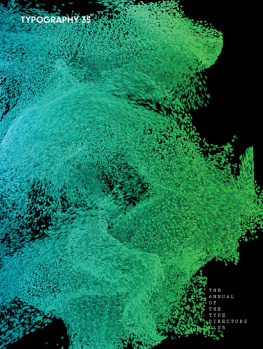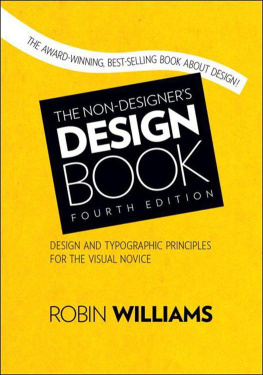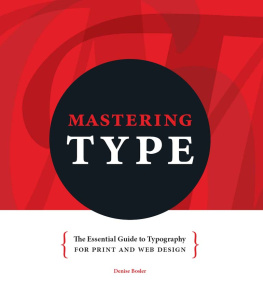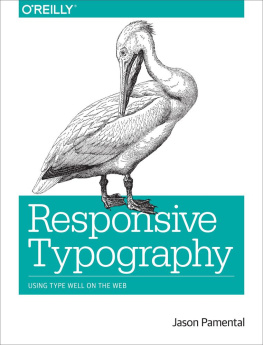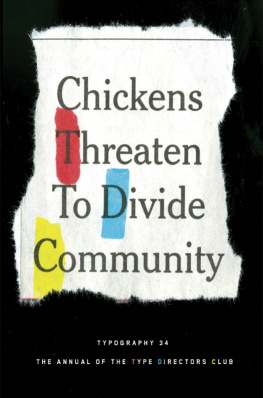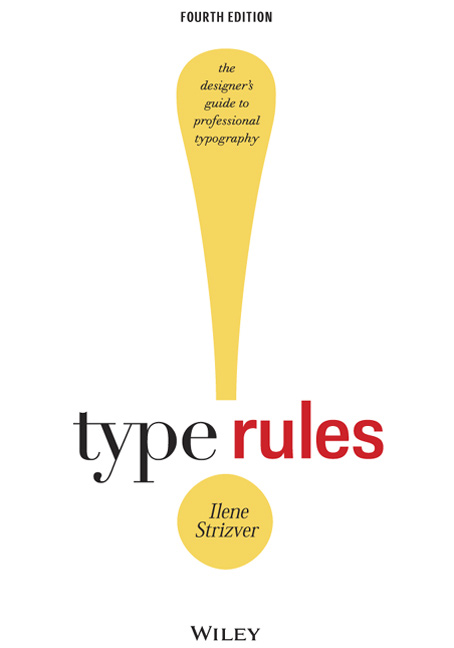Copyright 2014 by Ilene Strizver. All rights reserved.
Published by John Wiley & Sons, Inc., Hoboken, New Jersey.
Published simultaneously in Canada.
No part of this publication may be reproduced, stored in a retrieval system, or transmitted in any form or by any means, electronic, mechanical, photocopying, recording, scanning, or otherwise, except as permitted under Section 107 or 108 of the 1976 United States Copyright Act, without either the prior written permission of the Publisher, or authorization through payment of the appropriate per-copy fee to the Copyright Clearance Center, 222 Rosewood Drive, Danvers, MA 01923, (978) 750-8400, fax (978) 646-8600, or on the web at www.copyright.com . Requests to the Publisher for permission should be addressed to the Permissions Department, John Wiley & Sons, Inc., 111 River Street, Hoboken, NJ 07030, (201) 748-6011, fax (201) 748-6008, or online at www.wiley.com/go/permissions .
Limit of Liability/Disclaimer of Warranty: While the publisher and author have used their best efforts in preparing this book, they make no representations or warranties with the respect to the accuracy or completeness of the contents of this book and specifically disclaim any implied warranties of merchantability or fitness for a particular purpose. No warranty may be created or extended by sales representatives or written sales materials. The advice and strategies contained herein may not be suitable for your situation. You should consult with a professional where appropriate. Neither the publisher nor the author shall be liable for damages arising herefrom.
For general information about our other products and services, please contact our Customer Care Department within the United States at (800) 762-2974, outside the United States at (317) 572-3993 or fax (317) 572-4002.
Wiley publishes in a variety of print and electronic formats and by print-on-demand. Some material included with standard print versions of this book may not be included in e-books or in print-on-demand. If this book refers to media such as a CD or DVD that is not included in the version you purchased, you may download this material at http://booksupport.wiley.com . For more information about Wiley products, visit www.wiley.com .
Library of Congress Cataloging-in-Publication Data:
Strizver, Ilene, 1953
Type rules! : the designers guide to professional typography / Ilene Strizver. -- Fourth edition.
pages cm
Includes bibliographical references and index.
ISBN 978-1-118-45405-3 (pbk.); ISBN 978-1-118-74869-5 (ebk.); ISBN 978-1-118-75866-3 (ebk.)
1. Type and type-founding. 2. Graphic design (Typography) 3. Graphic design (Typography)--Computer programs. I. Title.
Z250.S92 2014
686.221--dc23
2013018923
978-1-118-45405-3
DEDICATION
This book is dedicated to my father, Leonard Strizver, who taught me to believe in myself and that the sky was the limit to what I could accomplish. Unfortunately he did not live long enough to see his words take shape in my life.
I hope I have made you proud, Dad.
ACKNOWLEDGMENTS
As someone whose academic beginnings focused on music and fine art, I was extremely lucky to have crossed paths with some of the most openhearted and talented individuals in the world of typography and graphic design, almost in spite of myself. Aaron Burns, Ed Benguiat, Herb Lubalin, Bob Farber, and Allan Haley permanently altered my lifes path, and I will be forever indebted to them. Their creative brilliance coupled with their incredible generosity of spirit ignited within me a passion for type that will never be satiated.
Through the years, there have been countless graphic designers, type designers, typographers, and other creative professionals who have unselfishly shared their knowledge and passion for type and design with me. To all of them I offer my deepest thanks, for without them, this book never would have come to be.
I want to extend a heartfelt thanks to my typographic partners in crime, James Montalbano, Mark Jamra, Ken Barber, Otmar Hoefer, Thomas Phinney, and David Lemon, who have generously and willingly shared their expertise and resources.
A very warm thanks to my special friends Maxim Zhukov, Christopher Slye, Fred Brady, and Nat Brockman, who have so very graciously offered their time and professional assistance to help make this a better book.
In addition, a very special thanks goes out to Charles Nix, Scott Fisk, Brian Lucid, Heather Shaw, and Jakob Trollbck, whose knowledge of todays digital technology helped make Type Rules! a more useful, up-to-date tool for todays graphics designers and students of design.
I would also like to extend my deepest gratitude to all the instructors who willingly shared their teaching methods and assignments with me and, as well, to the students who allowed the use of their assignment solutions for publication.
I could never express enough appreciation to all my students and workshop attendees. They continue to keep me on my toes; push me to learn newer and better methods, technique, and software; and challenge me to offer a better explanation. Their talent, enthusiasm, and passion for learning inspire me to be the best I can be.
And last but not least, a very special thanks to my editor, Margaret Cummins, whose unwavering belief in me and in this book, combined with her own vision of what it could be, inspired me to new heights.
PREFACE
This fourth edition of Type Rules! has been revised and expanded in a number of ways. The content has not only been updated to reflect current standards and practices in typography, design, and technology, but also significantly expanded to include the most up-to-date information on type on the web, type in motion, and type on other digital devices. All chapters have updated Techtips and Typetips, as well both new and tried-and-true Exercises, many of which include some very exciting student solutions.
TECHTIPS are instructional sidebars on how to employ some of the typographic principles and techniques featured throughout the book using one of the most widely used design applications, Adobe InDesign CS6 for Mac OS X.
TYPETIPS are sidebars that contain helpful hints and tasty tidbits that explain how to finesse your type in more detail.
And last, but definitely not least, the Exercises are intended to assist in learning and understanding typographic principles, and how to apply them to design projects. These Exercises, which follow each chapter, are intended for educators and students, but they can be used by anyone who wants to reinforce and apply the material in this bookand wind up with some great portfolio pieces as well!
* * * * *
This fourth edition has been expanded with the addition of bonus videos to accompany and enter the access code located at the back of this book to view the video content.
INTRODUCTION
Type is all around us, in everything we read, from product packaging in the grocery store to television commercials, from greeting cards, books, and magazines to movie credits and storefront signs. Learning to read and write the alphabet is one of the first things we are taught in school, and that process often begins before nursery school with television shows and videos intended for the hungry and curious minds of two- and three-year-olds.
Type and printed matter not only communicate information to us but also influence decisions we make on a daily basis. Whether we realize it or not, type and the way it appears affects which CD or book cover catches our eyes, which detergent we think might make the whites whiter, and which movie seems like it might be the scariest or most romantic. Much of this process goes on unconsciously, which is why the art and craft of typography is so invisible to the average person. But its unseen nature by no means diminishes the importance and influence type has on the quality and substance of our daily lives.


